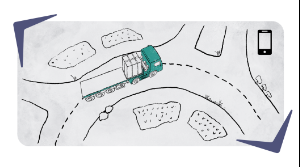If the sum of the external forces acting on an observed object is not zero, then the object is accelerating in the direction of the resultant of the forces acting on it.
The sum of all external forces acting on the observed object is calculated as follows: multiply the mass of the body by the acceleration with which the object is moving due to the action of the forces. If the fact that the force and acceleration are vectors is neglected, the expression is
F=m∙a
From this derives that the acceleration is equal to the resultant of the forces applied on the object divided by a mass of the object:

A force of 1 N moves a body of a mass 1 kg with an acceleration of 1 m/s2.
From the Newton’s second law it is evident how the unit Newton is composed:


A hockey player hits a stationary puck on smooth ice with a stick. What does the acceleration of the puck depend on?
Choose correct answers.
a) the mass of the puck
d) the force exerted by the stick on the puck
What must be the resultant of all forces acting on a car with a mass of 1,0 t so that its acceleration is 4 m/s2?
c) 4000 N
Do you want to see more on how the forces work? See our 3D animation with the truck where you can observe the effects of forces when loading the truck with different weights and then going into a curve.
Observe the clip. Explore the 3D model of the truck and think about the forces on the truck on the inclined road.
Why the truck with a load overturn?



